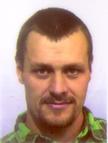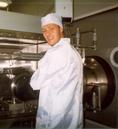|
Leonid MAC |
| home |
| View the shower |
| Mission Brief |
| Science Update |
| Media Brief |
| links |
 Dr. Markus Landgraf,
Dr. Markus Landgraf, ESA/ESOC, Europe 
Last updated: October 2002
Brief Biographical Information: I was born in 1968 in Kassel, but consider Darmstadt my hometown. In 1995 I finished by undergraduate studies in high-energy physics at the Darmstadt University of Technology. Two and a half years later I received my PhD in cosmophysics from the Max-Planck-Intitute for nuclear physics in Heidelberg. I spent one year as a postdoc research associate with the National Research Council at NASA/Johnson Space Center Houston, TX. After one year in Houston I was hired as visiting scientist by the European Space Agency. Since July 2000 I work for the European Space Agency (ESA) as staff mission analyst at the European Space Operations Centre (ESOC). My flying experience started in 1998 in Houston. I earned my wings on October 8th, 1999 at D&N Flying Service, a small flying school at Clover Field. So far I have flown 160 hours on Cessna 150, 152, 172s, Piper Archer and Arrow, as well as Mooney Bravo. Since May 2001 I am instrument rated. I have received one hour of flight training on a Space Shuttle motion base simulator in 1999 together with ESA astronaut Gerhard Thiele.
Research: My major research activity is on cosmic dust in the solar system. Especially I am interested in the properties of interstellar dust, i.e. dust not originating from the Solar System. More recently I started to investigate how dust in the outer reaches of the solar system is distributed. One question that I want to answer one day is whether or not our Solar System possesses a dust disk similar to the nearby main-sequence star Vega. Also my work on the design of DUNE, a mission to measure galactic dust near Earth continues. Research on Leonid MAC: near-real time flux measurements I will be part of the near-real time flux measurement team onboard NASA's DC-8, operating an intensified CCD camera that is identical to a camera operated from a ground location in Australia by an ESA team lead by Detlef Koschny. This camera plays the important role of helping to derive non-saturated fluxes in case the meteor shower activity rises much more than expected. Our goal is to provide near-real time flux measurements over a wide range of shower activity and to calibrate the flux measurements for observing conditions by comparing observations of the shower from different locations and under different observing conditions. We are especially interested to have a reliable rate count in case of a Leonid storm as predicted by P. Jenniskens.
|


